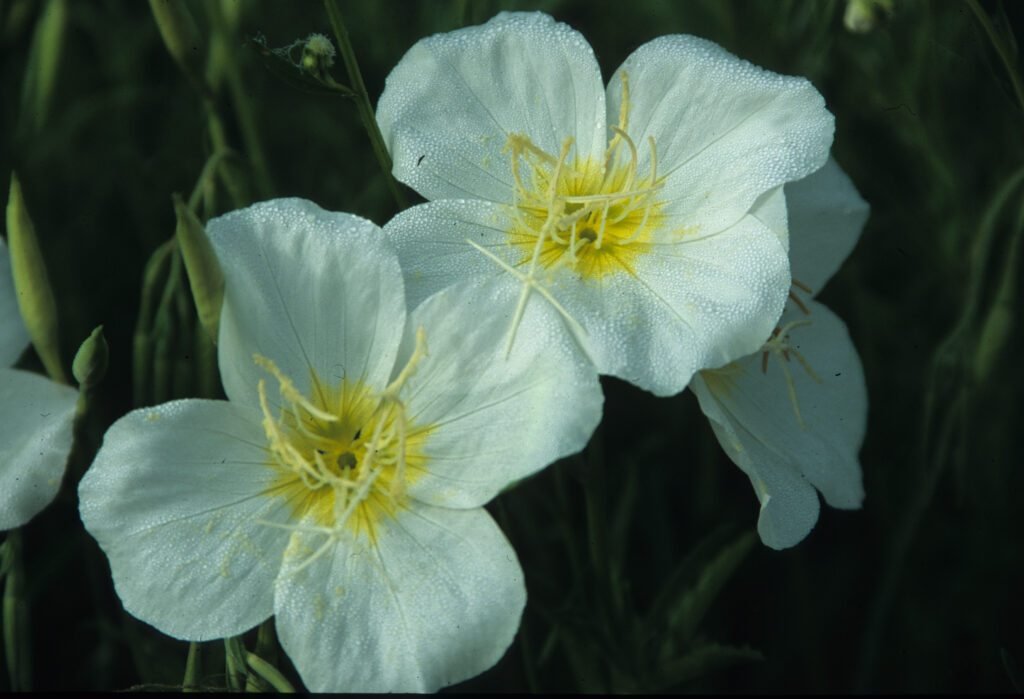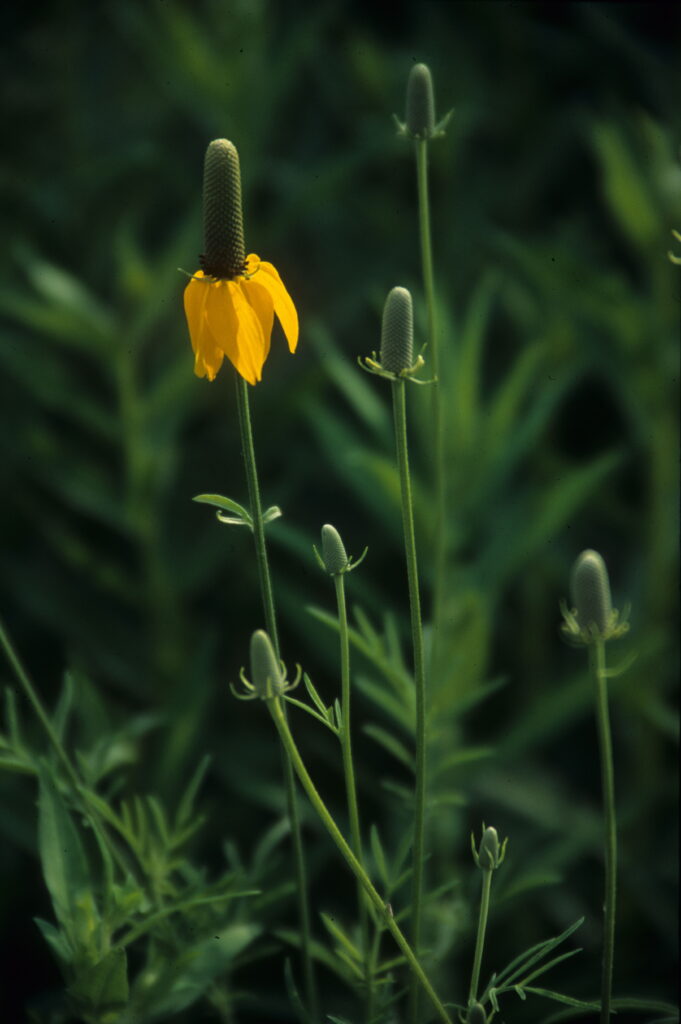When you mention wildflowers, people tend to visualize broad swaths of colorful flowers growing in meadows. This effect is often very difficult to achieve because of problems with soil preparation, plant establishment, weed control, and long term maintenance. Finding a solution to these problems usually requires more time and effort than most people want to invest.
Black-eyed Susan (Rudbeckia hirta)
Many wildflowers can be naturalized in low maintenance and unmown areas where they can reseed themselves or spread via roots. Black-eyed susan (Rudbeckia hirta) is a good candidate for naturalizing. Common in Kansas, the bright yellow ray florets with the characteristic brown, domed centers are a familiar site in June and July. Black-eyed susan is a vigorous biennial to short lived perennial that self-seeds readily. It will thrive in low a maintenance area with little care.

Clasping coneflower (Dracopis amplexicauslis)
This annual grows 18-24 inches tall and produces masses of large yellow flowers from late May well into July. The flowers are similar in appearance to black-eyed susans, but the ray flowers tend to droop downward. Also, they often have a dark red-brown band near the base of each individual ray floret. Clasping coneflower, a copious seed producer, thrives in clay soils and will often form dense colonies in moist soils. In late May and June, it is very showy in low fields and ditches in the Flint Hills of southeast Kansas.
Showy evening primrose (Oenothera speciosa)
This somewhat sprawling to upright perennial is common along roadsides in central Kansas. While white is the most common color, pink flowered forms can be found in this area as well. It generally blooms heavily from mid-April into June and then produces sporadic blossoms throughout the summer and fall. It seeds readily but usually takes two years to produce blooms. Here at the Arboretum, we have both the pink and white forms that produce a solid mass of flowers for over six weeks in the spring.

Mexican hat (Ratibida columnifera ‘Red’) and yellow columnar coneflower (Ratibida columnifera)
Typically, these upright clump forming perennials have abundant red tinged or bright yellow daisies with drooping ray petals around a prominent central cone – resembling a sombrero. The flowers are pollinator magnets, providing weeks of color and insect food. These wildflowers perform best in full sun and medium to dry moisture. The attractive seed heads add late season interest and birds seek out the seeds in the fall and winter.
Other wildflowers
- Bee balm, Monarda fistulosa
- Leavenworth eryngo, Eryngium leavenworthii
- Willowleaf Sunflower, Helianthus salicifolius
- Maximillian Sunflower, Helianthus maximilianii
- Common milkweed, Asclepias syriaca
- Showy goldenrod, Solidago speciosa
- Canadian goldenrod, Solidago canadensis
- Grayhead coneflower, Ratibida pinnata
- New England Aster, Aster novae-angliae
- Hoary vervain, Verbena stricta
- Blue vervain, Verbena hastata
All of these species are true wildflowers. They are aggressive, thrive with neglect and will continue to reseed and spread for many years. We recommend planting them from seed in late fall or early winter. Other desirable wildflowers can be added to these natural areas but do not try to plant these in your perennial border among your garden variety perennials and annuals. They will soon take over. They are best left to brighten the wilder areas of your yard and garden. Enjoy them from a distance.

